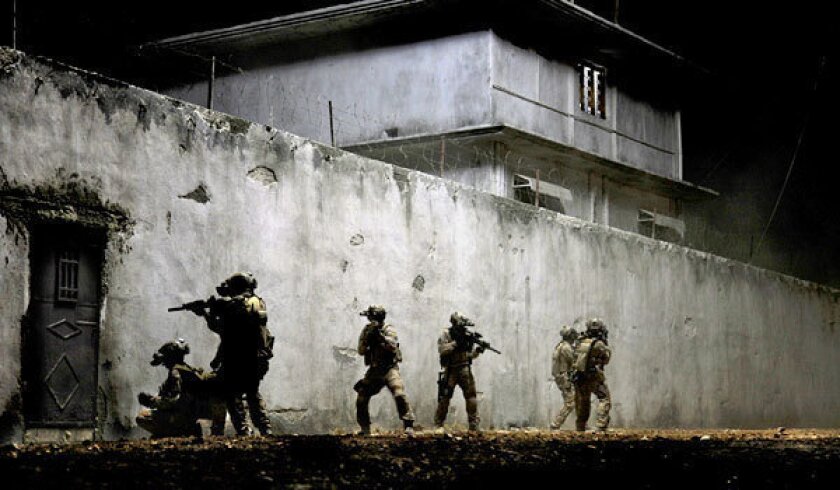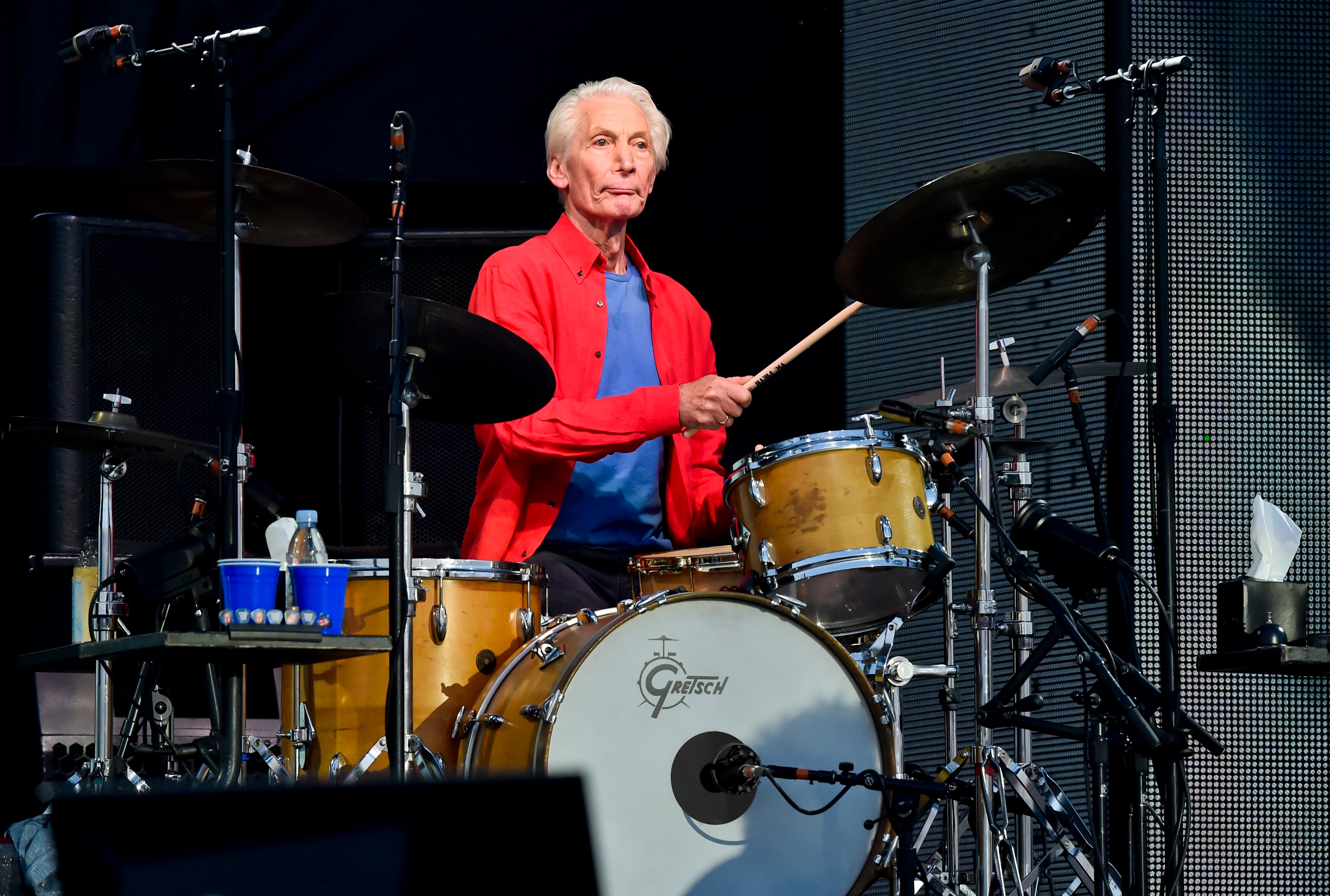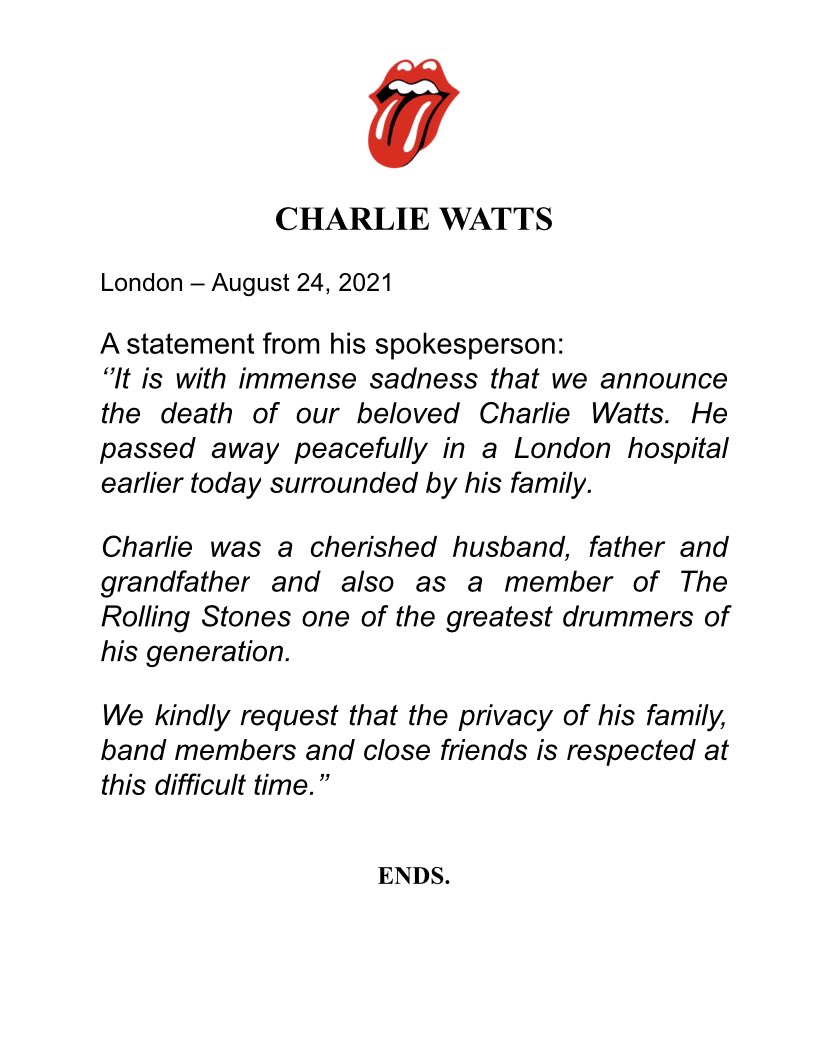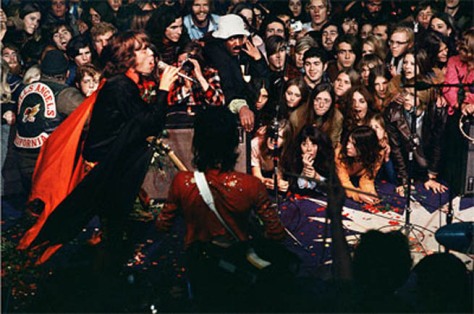By Dennis Hartley
(Originally posted on Digby’s Hullabaloo on August 21, 2021)

Now a note to the President, and the Government, and the judges of this place
We’re still waitin’ for you to bring our troops home, clean up that mess you made
‘Cause it smells of blood and money across the Iraqi land
But its so easy here to blind us with your united we stand
– from “Crash This Train”, by Joshua James
With the 20th anniversary of September 11th looming amid the political fireworks surrounding America’s ongoing “final” troop withdrawal from Afghanistan, there has been more than enough analyses (scholarly or otherwise) regarding the whys and wherefores of America’s wars on terror to go around lately, so I won’t add to the din. Besides-that’s above my pay grade. I’m just “the movie guy” around these parts.
I was perusing my 15 years of reviews and was surprised at the number of documentaries and feature films related to our involvement in Iraq and Afghanistan that I have covered. Collectively, these films not only paint a broad canvas of these endless wars themselves, but put the full spectrum of humanity on display, from “the better angels of our nature” to the absolute worst (mostly the worst).
So in lieu of a 3,000-word dissertation, I’ve culled 9 films from my archives that perhaps best represent what’s gone down “over there” (and on the home front) over the last 20 years since the World Trade Center towers fell, and one film that serves as a preface. It doesn’t feel appropriate to call this a “top 10” list, so let’s just call it, “food for thought”.
Pray for peace.

Charlie Wilson’s War – Aaron Sorkin, you silver-tongued devil, you had me at: “Ladies and gentlemen of the clandestine community…”
That line is from the opening scene of Charlie Wilson’s War, in which the titular character, a Texas congressman (Tom Hanks) is receiving an Honored Colleague award from the er-ladies and gentlemen of the clandestine community (you know, that same group of merry pranksters who orchestrated such wild and woolly hi-jinx as the Bay of Pigs invasion.)
Sorkin provides the snappy dialog for director Mike Nichols’ political satire. In actuality, Nichols and Sorkin may have viewed their screen adaptation of Wilson’s real-life story as a cakewalk, because it falls into the “you couldn’t make this shit up” category.
Wilson, known to Beltway insiders as “good-time Charlie” during his congressional tenure, is an unlikely American hero. He drank like a fish and loved to party but could readily charm key movers and shakers into supporting his pet causes and any attractive young lady within range into the sack. So how did this whiskey quaffing Romeo circumvent the official U.S. foreign policy of the time (1980s) and help the Mujahedin rebels drive the Russians out of Afghanistan, ostensibly paving the way for the collapse of the Soviet Union and the end of the Cold War? While a (mostly) true story, it plays like a fairy tale now; although in view of recent events we know the Afghan people didn’t necessarily live happily ever after. (Full review)

Fair Game – Doug Liman’s slightly uneven 2010 dramatization of the “Plame affair” and the part it played in the Bush administration’s “weapons of mass destruction” fiasco may hold more relevance now, with the benefit of hindsight. Jez and John-Henry Butterworth based their screenplay on two memoirs, The Politics of Truth by Joe Wilson, and Fair Game by Valerie Plame.
Sean Penn and Naomi Watts bring their star power to the table as the Wilsons, portraying them as a loving couple who were living relatively low key lives (she more as a necessity of her profession) until they got pushed into a boiling cauldron of nasty political intrigue that falls somewhere in between All the President’s Men and Three Days of the Condor.
Viewers unfamiliar with the back story could be misled by the opening scenes, which give the impression you may be in for a Bourne-style action thriller. The conundrum is that the part of the story concerning Valerie Plame’s CIA exploits can at best be speculative in nature. Due to the sensitivity of those matters, Plame has only gone on record concerning that part of her life in vague, generalized terms, so what you end up with is something along the lines of Confessions of a Dangerous Mind.
However, the most important part of the couple’s story was the political fallout that transpired once Valerie was “outed” by conservative journalist Robert Novak. Liman wisely shifts the focus to depicting how Wilson and Plame weathered this storm together, and ultimately stood up to the Bush-Cheney juggernaut of “alternative facts” that helped sell the American public on Operation Iraqi Freedom. (Full review)

The Kill Team – In an ideal world, no one should ever have to “go to war”. But it’s not an ideal world. For as long as humans have existed, there has been conflict. And always with the hitting, and the stoning, and the clubbing, and then later with the skewering and the slicing and stabbing…then eventually with the shooting and the bombing and the vaporizing.
So if we absolutely have to have a military, one would hope that the majority of the men and women who serve in our armed forces at least “go to war” as fearless, disciplined, trained professionals, instilled with a sense of honor and integrity. In an ideal world. Which again, this is not.
In 2011, five soldiers from the Fifth Stryker Brigade, Second Infantry Division (stationed near Kandahar) were officially accused of murdering three innocent Afghan civilians. Led by an apparently psychopathic squad leader, a Staff Sgt. Calvin Gibbs, the men were all members of the 3rd Platoon, which became known as “The Kill Team”.
Artfully blending intimate interviews with moody composition (strongly recalling the films of Errol Morris), director Dan Krauss coaxes extraordinary confessionals from several key participants and witnesses involved in a series of 2010 Afghanistan War incidents usually referred to as the “Maywand District murders“.
This is really quite a story (sadly, an old one), and because it can be analyzed in many contexts (first person, historical, political, sociological, and psychological), some may find Krauss’ film frustrating, incomplete, or even slanted. But judging purely on the context he has chosen to use (first person) I think it works quite well. (Full review)

The Messenger – I think this is the film that comes closest to getting the harrowing national nightmare of the wars in Iraq and Afghanistan “right”. Infused with sharp writing, smart direction and compelling performances, The Messenger is one of those insightful observations of the human condition that sneaks up and really gets inside you, haunting you long after the credits roll.
First-time director Owen Moverman and co-writer Alessandro Camon not only bring the war(s) home but proceed to march up your driveway and deposit in on your doorstep. Ben Foster, Samantha Morton and Woody Harrelson are outstanding. I think this film is to the Iraq/Afghanistan quagmire what The Deer Hunter was to Vietnam. It’s that good…and just as devastating. (Full review)

Son of Babylon – This heartbreaking Iraqi drama from 2010 is set in 2003, just weeks after the fall of Saddam. It follows the arduous journey of a Kurdish boy named Ahmed (Yasser Talib) and his grandmother (Shazda Hussein) as they head for the last known location of Ahmed’s father, who disappeared during the first Gulf War.
As they traverse the bleak, post-apocalyptic landscapes of Iraq’s bomb-cratered desert, a portrait emerges of a people struggling to keep mind and soul together, and to make sense of the horror and suffering precipitated by two wars and a harsh dictatorship.
Director Mohamed Al Daradji and co-screenwriter Jennifer Norridge deliver something conspicuously absent in the Iraq War(s) movies from Western directors in recent years-an honest and humanistic evaluation of the everyday people who inevitably get caught in the middle of such armed conflicts-not just in Iraq, but in any war, anywhere. (Full review)

Standard Operating Procedure – I once saw a fascinating TV documentary called Nazi Scrapbooks from Hell. It was the most harrowing depiction of the Holocaust I’ve seen, but it offered nary a glimpse of the oft-shown photographs of the atrocities themselves. Rather, it focused on photos from a scrapbook (discovered decades after the war) that belonged to an SS officer assigned to Auschwitz.
Essentially an organized, affably annotated gallery of the “after hours” lifestyle of a “workaday” concentration camp staff, it shows cheerful participants enjoying a little outdoor nosh, catching some sun, and even the odd sing-along, all in the shadow of the notorious death factory where they “worked”.
If it weren’t for the Nazi uniforms, you might think it was just a bunch of guys from the office, hamming it up for the camera at a company picnic. As the filmmakers point out, it is the everyday banality of this evil that makes it so chilling. The most amazing fact is that these pictures were taken in the first place.
What were they thinking?
This is the same rhetorical question posed by one of the interviewees in this documentary about the Abu Ghraib prisoner abuse scandal from renowned filmmaker Errol Morris. The gentleman is a military C.I.D. investigator who had the unenviable task of sifting through the hundreds of damning photos taken by several of the perpetrators.
Morris makes an interesting choice here. He aims his spotlight not on the obvious inhumanity on display in those sickening photos, but rather on our perception of them (echoes of Antonioni’s Blow-Up).
So just who are these people that took them? What was the actual intent behind the self-documentation? Can we conclusively pass judgment on the actions of the people involved, based solely on what we “think” these photographs show us? A disturbing, yet compelling treatise on the fine line between “the fog of war” and state-sanctioned cruelty. (Full review)

Stop/Loss – This powerful and heartfelt 2008 drama is from Boys Don’t Cry director Kimberly Peirce. Co-written by the director along with Mark Richard, it was one of the first substantive films to address the plight of Iraq war vets.
As the film opens, we meet Sgt. Brandon King (Ryan Phillippe), an infantry squad leader leading his men in hot pursuit of a carload of heavily armed insurgents through the streets of Tikrit. The chase ends in a harrowing ambush, with the squad suffering heavy casualties.
Brandon is wounded in the skirmish, as are two of his lifelong buddies, Steve (Channing Tatum) and Tommy (Joseph Gordon-Levitt). They return to their small Texas hometown to receive Purple Hearts and a hero’s welcome, infusing the battle-weary vets with a brief euphoria that inevitably gives way to varying degrees of PTSD for the trio.
A road trip that drives the film’s third act becomes a metaphorical journey through the zeitgeist of the modern-day American veteran. Peirce and her co-writer (largely) avoid clichés and remain low-key on political subtext; this is ultimately a soldier’s story. Regardless of your political stance on the Iraq War(s), anyone with an ounce of compassion will find this film both heart wrenching and moving. (Full review)

W – No one has ever accused Oliver Stone of being subtle. However, once you watch his 2008 take on the life and times of George W. Bush (uncannily played by Josh Brolin), I think the popular perception about the director, which is that he is a rabid conspiracy theorist who rewrites history via Grand Guignol-fueled cinematic polemics, could begin to diminish. I’m even going to go out on a limb and call W a fairly straightforward biopic.
Stone intersperses highlights of Bush’s White House years with episodic flashbacks and flash forwards, beginning in the late 60s (when Junior was attending Yale) and taking us up to the end of his second term.
I’m not saying that Stone doesn’t take a point of view; he wouldn’t be Oliver Stone if he didn’t. He caught some flak for dwelling on Bush’s battle with the bottle (the manufacturers of Jack Daniels must have laid out serious bucks for the ubiquitous product placement). Bush’s history of boozing is a matter of record.
Some took umbrage at another one of the underlying themes in Stanley Weisner’s screenplay, which is that Bush’s angst (and the drive to succeed at all costs) is propelled by an unrequited desire to please a perennially disapproving George Senior. I’m no psychologist, but that sounds reasonable to me. (Full review)

A War – This powerful 2015 Oscar-nominated drama is from writer-director Tobias Lindholm. Pilou Aesbaek stars as a Danish military company commander serving in the Afghanistan War. After one of his units is demoralized by the loss of a man to a Taliban sniper while on recon, the commander bolsters morale by personally leading a patrol, which becomes hopelessly pinned down during an intense firefight. Faced with a split-second decision, the commander requests air support, resulting in a “fog of war” misstep. The commander is ordered back home, facing charges of murdering civilians.
For the first two-thirds of the film Lindholm intersperses the commander’s front line travails with those of his family back home, as his wife (Yuva Novotny) struggles to keep life and soul together while maintaining as much of a sense of “normalcy” as she can muster for the sake their three kids. The home front and the war front are both played “for real” (aside from the obvious fact that it’s a Danish production, this is a refreshingly “un-Hollywoodized” war movie).
Some may be dismayed by the moral and ethical ambivalence of the denouement. Then again, there are few tidy endings in life…particularly in war, which (to quote Bertrand Russell) never determines who is “right”, but who is left. Is that a tired trope? Perhaps; but it’s one that bears repeating…until that very last bullet on Earth gets fired in anger. (Full review)

Zero Dark Thirty – “Whadaya think…this is like the Army, where you can shoot ‘em from a mile away?! No, you gotta get up like this, and budda-bing, you blow their brains all over your nice Ivy League suit.”
–from The Godfather, screenplay by Mario Puzo and Francis Ford Coppola
If CIA operative Maya (Jessica Chastain), the partially fictionalized protagonist of Zero Dark Thirty had her druthers, she would “drop a bomb” on Osama Bin Laden’s compound, as opposed to dispatching a Navy SEAL team with all their “…Velcro and gear.” Therein lays the crux of my dilemma regarding Kathryn Bigelow’s film recounting the 10-year hunt for the 9-11 mastermind and events surrounding his take down; I can’t decide if it’s “like the Army” or a glorified mob movie.
But that’s just me. Perhaps the film is intended as a litmus test for its viewers (the cries of “Foul!” that emitted from both poles of the political spectrum, even before its wide release back in 2013 would seem to bear this out). And indeed, Bigelow has nearly succeeded in making an objective, apolitical docudrama.
Notice I said “nearly”. But if you can get past the fact that Bigelow or screenwriter Mark Boal are not ones to necessarily allow the truth to get in the way of a good story (and that The Battle of Algiers or The Day of the Jackal…this definitely ain’t), in terms of pure film making, there is an impressive amount of (if I may appropriate an oft-used phrase from the movie) cinematic “trade craft” on display.
While lukewarm as a political thriller, it does make a terrific detective story, and the recreation of the SEAL mission, while up for debate as to accuracy (only those who were there could say for sure, and keeping mum on such escapades is kind of a major part of their job description) is quite taut and exciting. The best I can do is arm you with those caveats; so you will have to judge for yourself. (Full review)
…and one more thing
2 weeks ago I posted a review of Mariam Ghani’s new documentary What We Left Unfinished, which takes a rare look at the Afghan film industry, and how a group of filmmakers kept it flourishing during Afghanistan’s Communist era (1978 to 1991). Earlier this week, it was announced that tickets purchased via Dekanalog Eventive will go to the Emergency Funds For Afghan Artists Go Fund Me organized by the Afghan American Artists and Writers Association. You will find more detailed information and latest updates here.







 Stalwart to the end, Charlie Watts was the “rock” in rock ‘n’ roll. Solid, reliable, resolute. He sat Sphinx-like behind his kit for over 50 years, laying down a steady beat while remaining seemingly impassive to all the madness and mayhem that came with the job of being a Rolling Stone. He was cool as a cucumber, as impeccably tailored and enigmatic as Reynolds Woodcock. “Reynolds Who?”
Stalwart to the end, Charlie Watts was the “rock” in rock ‘n’ roll. Solid, reliable, resolute. He sat Sphinx-like behind his kit for over 50 years, laying down a steady beat while remaining seemingly impassive to all the madness and mayhem that came with the job of being a Rolling Stone. He was cool as a cucumber, as impeccably tailored and enigmatic as Reynolds Woodcock. “Reynolds Who?” 




















